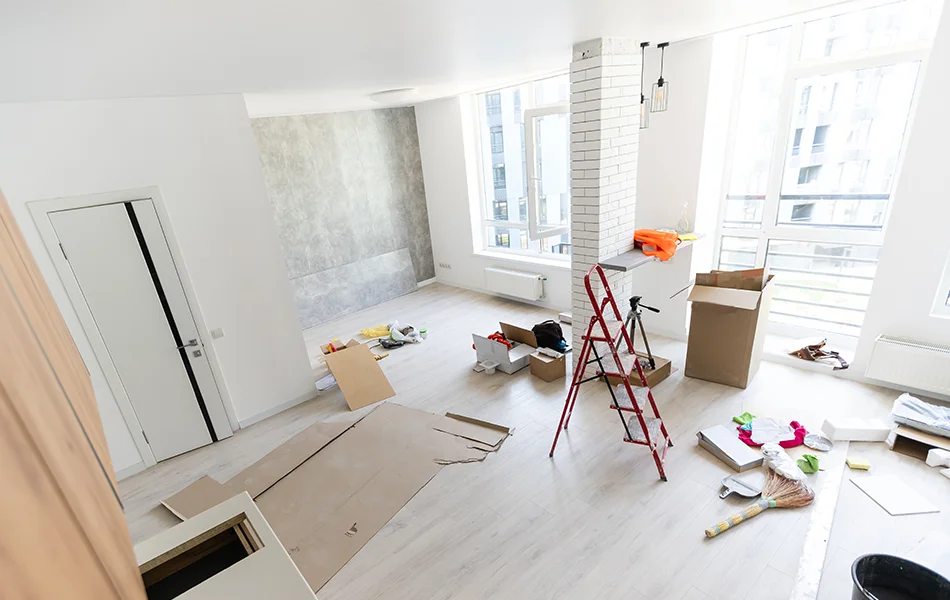If you’re looking to add a pop of color and personality to your home or workspace, a wall mural may be just the solution you need. But the idea of creating a mural can be daunting, especially if you’re not an experienced artist. That’s why we’ve put together this guide to help you learn about the mural techniques and steps involved in creating a stunning wall mural. From preparation to painting and sealing, we’ll walk you through everything you need to know to bring your mural to life. So let’s get started on this fun and creative journey!
Clean and prime the wall.
We don’t want to start painting without even cleaning and priming the wall. While there is no optimal method for cleaning walls before painting, most walls can be cleaned with a sponge and warm water. Kitchen walls, for example, should be cleaned with a solution of water and grease-cutting detergent, followed by a rinse with clean water to remove any leftover cleaning agent. Finally, wipe off the walls with a moist towel.
The most critical component of the process is to allow everything to dry completely. Applying primer or paint to moist walls can result in a variety of problems, including scorching. Any uneven surfaces can be smoothed out with sandpaper or a sanding block. Then, use a moist cloth to remove any dust.
If primer serves as the home’s foundation, paint and paint color are what create a house. To get the most out of your paint, use a primer, especially if your walls are porous or have stains that need to be covered up on the surface. Primers cover up flaws, provide a smooth surface for paint to adhere to, and guarantee a consistent finish no matter what you’re painting.
Use Grid: The Easiest Way to Transfer Ideas on the Wall
It’s simple to use a grid to scale your artwork onto a wall. To use this approach, ideally, you should have a flat wall.
The first time I used it, the wall was just around 3 meters tall. My first error or learning curve with this approach was that I utilized too many grid lines; I believe there were ten. However, it will be on a case-by-case basis. You must determine what grid method works best for you and the artwork that you are enlarging for the wall.
This procedure is rather simple. Draw a grid over your work, such as on an A4 piece of paper. The grid corresponds to the size of the wall, say 3 meters by 3 meters. So, if you had a grid with three rows or columns, they would be one meter apart. Simply ensure that they are evenly distributed over your artwork.
Mural Tips: Mural Painting Techniques
To begin, you must first transfer your image from canvas to the wall. You should have a rough idea of how your mural will appear by now, then expand the picture onto the wall using one of these mural techniques: the grid approach or an art projector. Trace the image onto your wall using a pencil.
You may begin the under-painting now that you have your pencil sketch. The underpainting comprises broad color blocks, over which you will eventually paint more detail. You may utilize interior home paint for vast regions of color, depending on the colors in your image.
Stenciling
Stenciling is a popular mural method since it is quite straightforward and anybody can do it; no specific art abilities are required. Stencils are available in a broad range of forms and sizes, including alphabet characters, farm animals, fauna, trees, and planets.
To stencil, apply the stencil to the wall with painter’s tape. Hold the stencil in place with one hand while painting in the color with the other. You must exercise caution around the edges since you do not want too much paint buildup on the edges when you peel the stencil away. To avoid buildup on the wall, apply paint near the borders in a sweeping, circular motion.
Sponging
Sponging is a great technique to add texture to a mural, such as clouds in the sky or leaves on a tree. You may also sponge one color on top of another to add depth and intrigue to an area rather than leaving it as a flat, single block of color. Sponging is another useful mural method for swiftly filling up vast regions of color.
To sponge, moisten the sponge and squeeze off the excess water. Dip your moist sponge softly into the paint, then blot it on some paper towels.
Glazing
To make acrylic glazes on a wall, combine acrylic paint with Golden Glazing Liquid, an overly protective acrylic glaze medium. This will thin and “stretch” the paint, resulting in a more transparent finish. The underlying color will come through when you paint a glaze on the wall. This is an excellent method for adding dimension and shade to your work.
Preparing the wall surface for mural painting
Preparing the wall surface is an important step in creating a successful mural. Here are the steps you can take to prepare the wall surface for mural painting:
- Clean the Wall: Clean the wall with a mild detergent solution and a soft-bristled brush or sponge. This will remove any dirt, grease, or other contaminants that could interfere with the paint’s adhesion.
- Repair any Damage: Repair any holes, cracks, or other damage to the wall surface. Use a spackling compound to fill holes and cracks and sand the surface to create a smooth finish.
- Sand the Wall: Sand the wall with sandpaper to create a slightly rough surface. This will help the paint adhere to the surface.
- Prime the Wall: Apply a coat of primer to the wall surface. This will help the paint adhere better and also prevent any existing color or pattern on the wall from bleeding through the new paint.
- Allow the Primer to Dry: Allow the primer to dry completely before applying the mural. This usually takes a few hours, but can vary depending on the type of primer used and the humidity of the space.
Taking the time to properly prepare the wall surface will help ensure that the paint job or mural adheres well and looks great. It will also help extend the longevity of the mural.
Useful Tip on How to Paint a Mural: Wall Priming
It is critical to begin with a properly prepared surface when painting a mural on a wall. Here are some helpful hints for preparing a wall for a mural:
- Clean the wall completely before priming. Before priming, thoroughly clean the wall. Dust, grime, and other particles might interfere with the primer’s and paint’s application.
- Select the proper primer: Select a primer that is particularly suited for the surface you will be painting on. If you’re painting on a porous surface, such as concrete or brick, use a primer formulated for porous surfaces.
- Apply the primer: Using a roller or brush, apply the primer to outline the wall. Apply the primer evenly and coat the whole area.
- Allow the primer to dry completely before painting the mural. Depending on the sort of acrylic primer you use and the humidity level, this might take anything from a few hours to a whole day.
By priming the wall properly before painting your mural, you will guarantee that the paint adheres properly and that the colors are more brilliant and long-lasting.
An Interior Designer’s Brief Guide to Painting a Wall Mural
Here is a brief interior designer’s guide to painting a wall mural:
- Make a paper or digital drawing of your design.
- Choose a wall that is smooth and clean.
- Fill any gaps or fractures in the surface and sand it down.
- Use high-quality paint made exclusively for murals.
- Make use of the appropriate instruments, such as a brush, roller, or spray paint.
- Begin with a base coat and allow it to dry fully.
- Paint the mural in stages, beginning with brighter colors and ending with deeper tones.
- To make neat lines and forms, use stencils or masking tape.
- To bring the mural to life, add detail and shading.
- For preservation and longevity, apply a clear layer of varnish or sealer to the mural.
- Take your time and enjoy the process of designing a stunning and one-of-a-kind wall mural.
Remember to take your time and enjoy the process of creating a beautiful and unique wall mural.
What kind of paint do you usually use for a mural?
The type of paint you choose for a mural may be determined by several factors, including the surface you’re painting on, the scale of the mural, and the desired finish. There are, however, a few typical types of paint that are frequently used for murals:
Acrylic paint is a popular choice of paint for murals since it is water-based, dries rapidly, and is simple to work with. It is also available in a number of colors and may be used on a variety of surfaces.
Latex paint is comparable to acrylic paint; however, it has a slightly different chemical composition than acrylic paints. It is also water-based and simple to work with, making it an excellent choice for murals.
Oil-based paint is less typically used for murals since it dries slower and can be more difficult to work with. It may, however, give a strong and long-lasting finish, making it an excellent choice for outdoor murals.
Overall, the sort of paint you use to paint a mural on a bedroom wall will be determined by your unique requirements and tastes. Before beginning your mural, test several types of paint on a tiny piece of the wall to ensure you’re pleased with the results.
Using acrylic paint on the wall
Acrylic paint may be used on wood walls too, but there are a few things to consider before you begin:
Surface Preparation: Before applying acrylic paint to a wall, make sure it is clean and free of dust, grime, or grease. Fill any cracks or holes in the wall using spackling compound, let it dry, then sand the entire surface until smooth.
Primer: Before painting the room, apply a layer of primer to the wall. This will aid in the adhesion of the paint to the surface and produce a more uniform finish.
Use a paintbrush, roller, or sprayer to apply the acrylic paint to the wall. To avoid the brushes leaving lint or fibers on the surface, use a high-quality roller cover while using a roller. Apply the paint in thin, even layers, allowing each item to dry completely before proceeding.
Time to Dry: Acrylic paint dries fast, generally within a few hours. However, before hanging a second coat or anything else on the wall, wait at least 24 hours.
Overall, acrylic paint is a good choice for painting walls since it is simple to use and dries rapidly. To achieve a smooth and long-lasting finish, simply follow the necessary preparation and application methods.
How do you finish and seal a painted wall mural?
Sealing your painted wall mural is the final stage in the process. This entails applying an isolation layer as well as a varnish. Use a matte or satin-sheen, clear, non-yellowing archival varnish. Glossy varnish would be excessively reflective for a wall mural and would most likely look odd in indoor illumination. Choose a removable varnish in case you need to go below the varnish for conservation purposes.
To apply the varnish, check the back of the bottle for the exact varnish-to-water ratio. Begin by wetting it in a corner and applying the varnish with a broad paintbrush in a cross-hatching pattern across the wall. This varnish mural approach will make the varnish appear more uniform.





